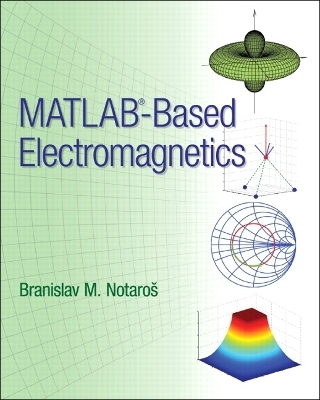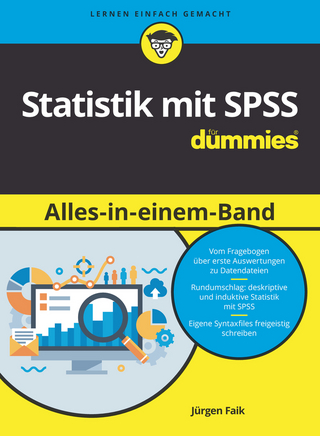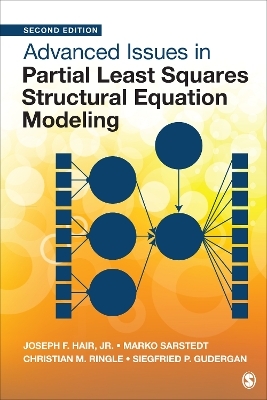
MATLAB-Based Electromagnetics
Pearson (Verlag)
978-0-13-285794-9 (ISBN)
- Titel z.Zt. nicht lieferbar
- Versandkostenfrei innerhalb Deutschlands
- Auch auf Rechnung
- Verfügbarkeit in der Filiale vor Ort prüfen
- Artikel merken
MATLAB-Based Electromagentics provides engineering and physics students and other users with an operational knowledge and firm grasp of electromagnetic fundamentals aimed toward practical engineering applications, by teaching them “hands on” electromagnetics through a unique and comprehensive collection of MATLAB computer exercises and projects. Essentially, the book unifies two themes: it presents and explains electromagnetics using MATLAB on one side, and develops and discusses MATLAB for electromagnetics on the other.
MATLAB codes described (and listed) in TUTORIALS or proposed in other exercises provide prolonged benefits of learning. By running codes; generating results, figures, and diagrams; playing movies and animations; and solving a large variety of problems in MATLAB, in class, with peers in study groups, or individually, readers gain a deep understanding of electromagnetics.
Branislav M. Notaroš received the Dipl.Ing. (B.Sc.), M.Sc., and Ph.D. degrees in electrical engineering from the University of Belgrade, Belgrade, Yugoslavia, in 1988, 1992, and 1995, respectively. From 1996 to 1998, he was an Assistant Professor in the Department of Electrical Engineering at the University of Belgrade, and before that, from 1989 to 1996, a Teaching and Research Assistant (faculty position) in the same department. He spent the 1998-1999 academic year as a Research Associate at the University of Colorado at Boulder. He was an Assistant Professor, from 1999 to 2004, and Associate Professor (with Tenure), from 2004 to 2006, in the Department of Electrical and Computer Engineering at the University of Massachusetts Dartmouth. He is currently an Associate Professor (with Tenure) of electrical and computer engineering at Colorado State University. Research activities of Prof. Notaroš are in applied computational electromagnetics, antennas, and microwaves. His research publications so far include 22 journal papers, 58 conference papers and abstracts, and a chapter in a monograph. His main contributions are in higher order computational electromagnetic techniques based on the method of moments, finite element method, physical optics, domain decomposition method, and hybrid methods as applied to modeling and design of antennas and microwave circuits and devices for wireless technology. He has produced several Ph.D. and M.S. graduates. Prof. Notaroš’ teaching activities are in theoretical, computational, and applied electromagnetics. He is the author of the Electromagnetics Concept Inventory (EMCI), an assessment tool for electromagnetic fields and waves. He has published 3 workbooks in electromagnetics and in fundamentals of electrical engineering (basic circuits and fields). He has taught a variety of undergraduate and graduate courses in electromagnetic theory, antennas and propagation, computational electromagnetics, fundamentals of electrical engineering, electromagnetic compatibility, and signal integrity. He has been consistently extremely highly rated by his students in all courses, and most notably in undergraduate electromagnetics courses (even though undergraduates generally find these mandatory courses quite difficult and challenging). Dr. Notaroš was the recipient of the 2005 IEEE MTT-S Microwave Prize, Microwave Theory and Techniques Society of the Institute of Electrical and Electronics Engineers (best-paper award for IEEE Transactions on MTT), 1999 IEE Marconi Premium, Institution of Electrical Engineers, London, UK (best-paper award for IEE Proceedings on Microwaves, Antennas and Propagation), 1999 URSI Young Scientist Award, International Union of Radio Science, Toronto, Canada, 2005 UMD Scholar of the Year Award, University of Massachusetts Dartmouth, 2004 Dean’s Recognition Award, College of Engineering, University of Massachusetts Dartmouth, 2009 and 2010 ECE Excellence in Teaching Awards (by nominations and votes of ECE students), Colorado State University, and 2010 George T. Abell Outstanding Teaching and Service Faculty Award, College of Engineering, Colorado State University.
1 Electrostatic Field in Free Space 1
1.1 Coulomb’s Law . . . . . . . . . . . . . . . . . . . . . . . . . . . . . . . . . . . . . . 1
1.2 Electric Field Intensity Vector Due to Given Charge Distributions . . . . . . . . . 9
1.3 Electric Scalar Potential . . . . . . . . . . . . . . . . . . . . . . . . . . . . . . . . . 20
1.4 Differential Relationship Between the Field and Potential in Electrostatics, Gradient 26
1.5 Electric Dipole . . . . . . . . . . . . . . . . . . . . . . . . . . . . . . . . . . . . . . 28
1.6 Gauss’ Law in Integral Form . . . . . . . . . . . . . . . . . . . . . . . . . . . . . . 30
1.7 Differential Form of Gauss’ Law, Divergence . . . . . . . . . . . . . . . . . . . . . . 31
1.8 Method of Moments for Numerical Analysis of Charged Metallic Bodies . . . . . . 33
2 Electrostatic Field in Dielectrics 41
2.1 Characterization of Dielectric Materials . . . . . . . . . . . . . . . . . . . . . . . . 41
2.2 Dielectric—Dielectric Boundary Conditions . . . . . . . . . . . . . . . . . . . . . . . 46
2.3 Poisson’s and Laplace’s Equations . . . . . . . . . . . . . . . . . . . . . . . . . . . 50
2.4 Finite-Difference Method for Numerical Solution of Laplace’s Equation . . . . . . . 51
2.5 Evaluation of Capacitances of Capacitors and Transmission Lines . . . . . . . . . . 59
2.6 Capacitors with Inhomogeneous Dielectrics . . . . . . . . . . . . . . . . . . . . . . 69
2.7 Dielectric Breakdown in Electrostatic Systems . . . . . . . . . . . . . . . . . . . . . 70
3 Steady Electric Currents 73
3.1 Continuity Equation, Conductivity, and Ohm’s Law in Local Form . . . . . . . . . 73
3.2 Boundary Conditions for Steady Currents . . . . . . . . . . . . . . . . . . . . . . . 79
3.3 Relaxation Time . . . . . . . . . . . . . . . . . . . . . . . . . . . . . . . . . . . . . 81
3.4 Resistance and Ohm’s Law . . . . . . . . . . . . . . . . . . . . . . . . . . . . . . . 82
4 Magnetostatic Field in Free Space 86
4.1 Magnetic Force and Magnetic Flux Density Vector . . . . . . . . . . . . . . . . . . 86
4.2 Magnetic Field Computation Using Biot—Savart Law . . . . . . . . . . . . . . . . . 92
4.3 Ampere’s Law in Integral Form . . . . . . . . . . . . . . . . . . . . . . . . . . . . . 98
4.4 Differential Form of Ampere’s Law, Curl . . . . . . . . . . . . . . . . . . . . . . . . 102
4.5 Magnetic Vector Potential . . . . . . . . . . . . . . . . . . . . . . . . . . . . . . . . 103
4.6 Magnetic Dipole . . . . . . . . . . . . . . . . . . . . . . . . . . . . . . . . . . . . . 104
5 Magnetostatic Field in Material Media 106
5.1 Permeability of Magnetic Materials . . . . . . . . . . . . . . . . . . . . . . . . . . . 106
5.2 Boundary Conditions for the Magnetic Field . . . . . . . . . . . . . . . . . . . . . . 108
5.3 Magnetic Circuits . . . . . . . . . . . . . . . . . . . . . . . . . . . . . . . . . . . . . 109
vi Contents, Preface, and m Files on Instructor Resources
6 Time-Varying Electromagnetic Field 118
6.1 Faraday’s Law of Electromagnetic Induction . . . . . . . . . . . . . . . . . . . . . . 118
6.2 Self-Inductance . . . . . . . . . . . . . . . . . . . . . . . . . . . . . . . . . . . . . . 125
6.3 Mutual Inductance . . . . . . . . . . . . . . . . . . . . . . . . . . . . . . . . . . . . 127
6.4 Displacement Current . . . . . . . . . . . . . . . . . . . . . . . . . . . . . . . . . . 128
6.5 Maxwell’s Equations for the Time-Varying Electromagnetic Field . . . . . . . . . . 130
6.6 Boundary Conditions for the Time-Varying Electromagnetic Field . . . . . . . . . . 132
6.7 Time-Harmonic Electromagnetics . . . . . . . . . . . . . . . . . . . . . . . . . . . . 136
6.8 Complex Representatives of Time-Harmonic Field and Circuit Quantities . . . . . 137
6.9 Instantaneous and Complex Poynting Vector . . . . . .
| Sprache | englisch |
|---|---|
| Maße | 100 x 100 mm |
| Gewicht | 100 g |
| Themenwelt | Mathematik / Informatik ► Mathematik ► Computerprogramme / Computeralgebra |
| Technik ► Elektrotechnik / Energietechnik | |
| ISBN-10 | 0-13-285794-4 / 0132857944 |
| ISBN-13 | 978-0-13-285794-9 / 9780132857949 |
| Zustand | Neuware |
| Haben Sie eine Frage zum Produkt? |
aus dem Bereich


